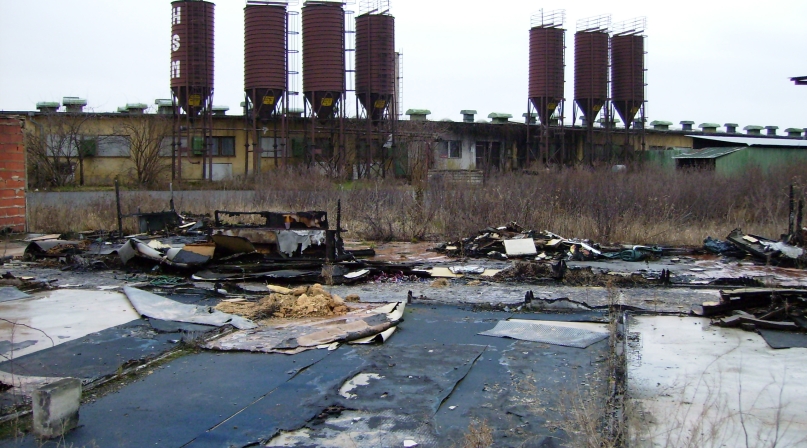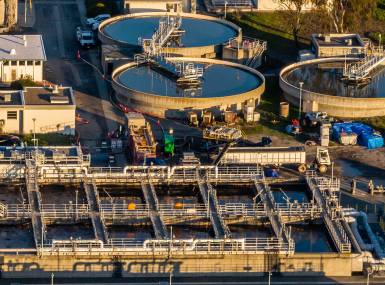Senate moves brownfields bill; path remains unclear in House
Upcoming Events
Related News

BUILD Act authorizes EPA’s Brownfields program through 2018
The Senate has approved a bipartisan Brownfields Utilization, Investment, and Local Development Act of 2015 (BUILD Act, S. 1479) by unanimous consent. The measure passed on June 27 reauthorizes a popular EPA program that helps communities revitalize underused and contaminated land. The measure would authorize EPA’s Brownfields program through 2018.
Originally passed in 2002 as a provision the Small Business Liability Relief and Brownfields Revitalization Act (P.L. 107-118), EPA’s brownfields program provides technical assistance and grants for communities to reclaim previously owned industrial sites that have fallen into disuse.
Through the program, there have been over 24,000 brownfields assessments and 1,200 brownfields cleanups nationally, which supporters said sparked economic development opportunities and created over 113,000 jobs. While the program’s authorization expired in 2006, Congress continued to fund it, and the program received $189 million in FY16. Key provisions in the BUILD Act
• Expanding the universe of eligible brownfields grant entities to include nonprofit organizations, limited liability corporations, limited partnerships or qualified community development entities. While this provision potentially broadens the types of entities that would qualify for funding, brownfields redevelopment projects are expensive and the grants only cover a small portion of the costs. As a result, local governments often partner with outside groups for brownfields redevelopment.
• Creating a multipurpose brownfields grant program that would allow eligible entitles to undertake multiple brownfield projects under the same grant.
• Allowing certain government entities, who are non-owners, to be eligible to receive grants, as long as the government entity did not cause or contribute to the pollution to the site. Under current law, if a local government does not own the brownfields site, they cannot apply for grant funding.
• Increasing funding for brownfields cleanup grants from $200,000 to $500,000 per site and authorizing additional funding for multipurpose grants up to $950,000. These increases will provide greater certainty for long-term project financing.
• Allowing additional administrative costs to be charged back to the grant. Grant recipients can use up to 8 percent of their brownfields grant for administrative costs.
• Giving small community technical assistance grants to eligible entities in communities with populations under 15,000 and/or in disadvantaged areas where the annual median household income is less than 80 percent of the state-wide annual medium income.
• Providing grants to waterfront brownfield sites that are located next to a body of water or federally designated flood plains.
• Offering grants for renewable energy projects on brownfield sites. This includes facilities that generate wind, solar or geothermal energy or any energy efficiency improvement projects on brownfields.
The measure now heads to the House for consideration where a similar bill, the Brownfields Reauthorization Act of 2016 (H.R. 4463), awaits committee action. However, both the House Transportation and Infrastructure, and the Energy and Commerce committees have indicated they are working on a separate free-standing, yet-to-be-introduced brownfields bill.
NACo supports continued funding for redevelopment of abandoned or under-utilized brownfield sites and believes the federal government should provide incentives for counties to identify and remediate contaminated properties.
Attachments
Related News

Congress examines PFAS liability and cleanup regulations
On December 18, the U.S. House Energy and Commerce Subcommittee on Environment held a hearing examining the current statutory and regulatory landscape for PFAS. The hearing follows a similar hearing held by the U.S. Senate Environment and Public Works Committee on November 19.
‘Fix-It Fair’ brings new life to damaged items, helps divert waste
Thurston County, Wash. partnered with a non-profit to help residents fix things that are difficult to recycle.

U.S. House of Representatives passes SPEED Act and other permitting reform bills
On December 18, the U.S. House of Representatives passed the SPEED Act (H.R. 4776). The SPEED Act would strengthen county involvement in decision-making and make needed commonsense reforms to the federal environmental review process.